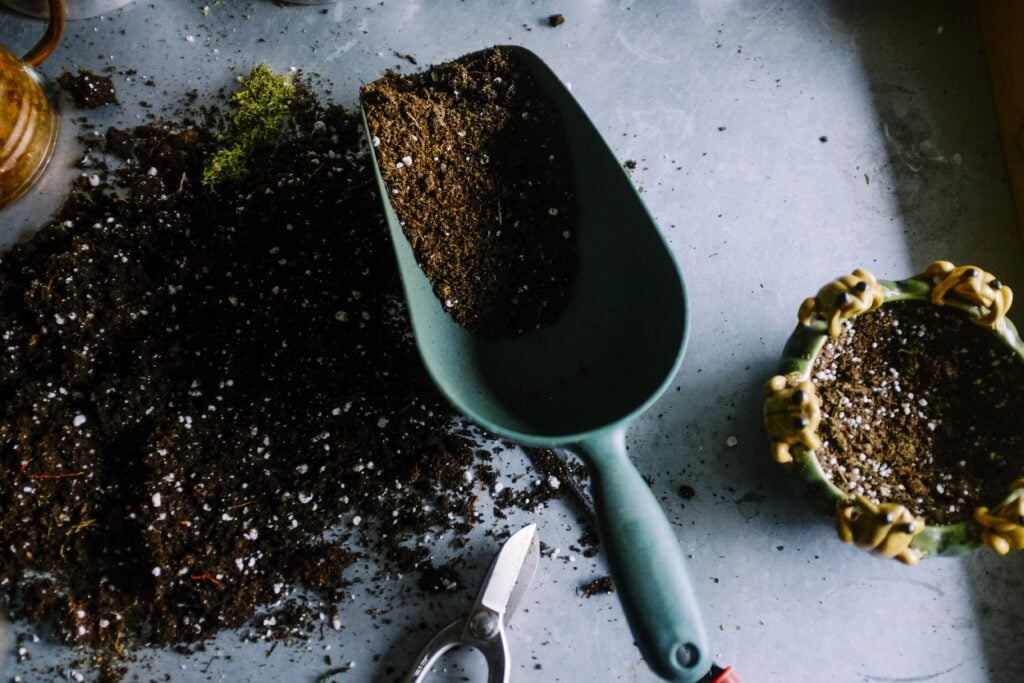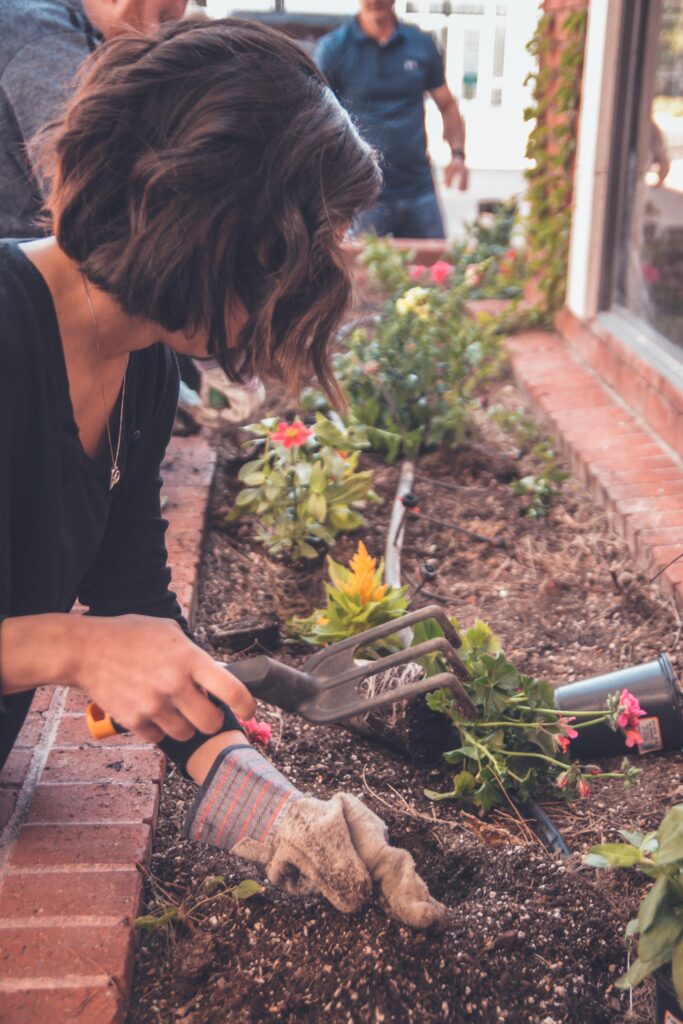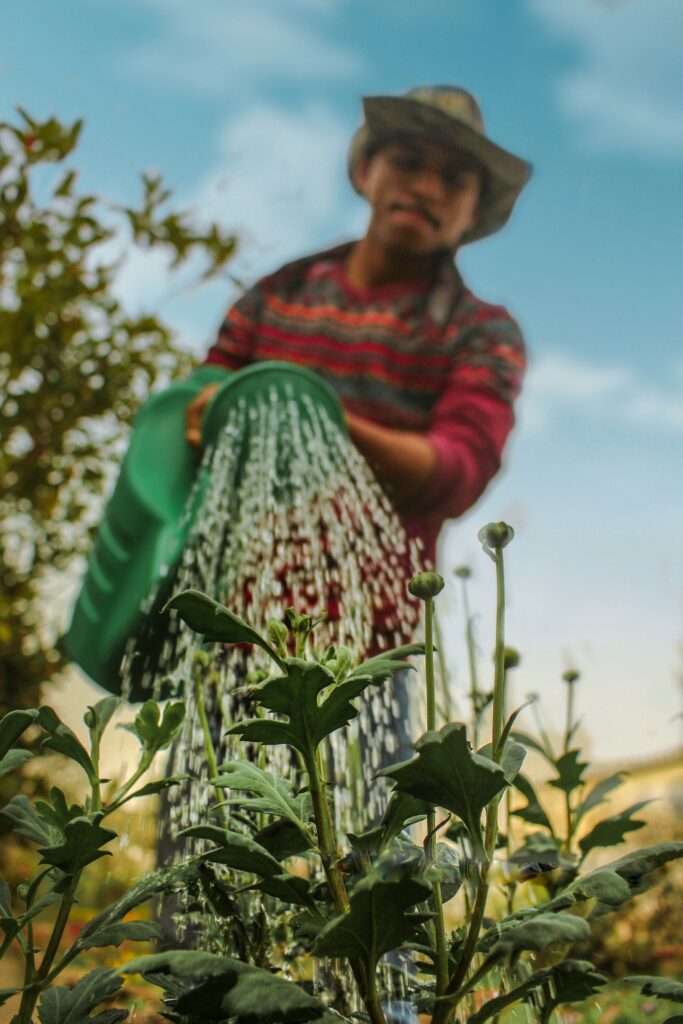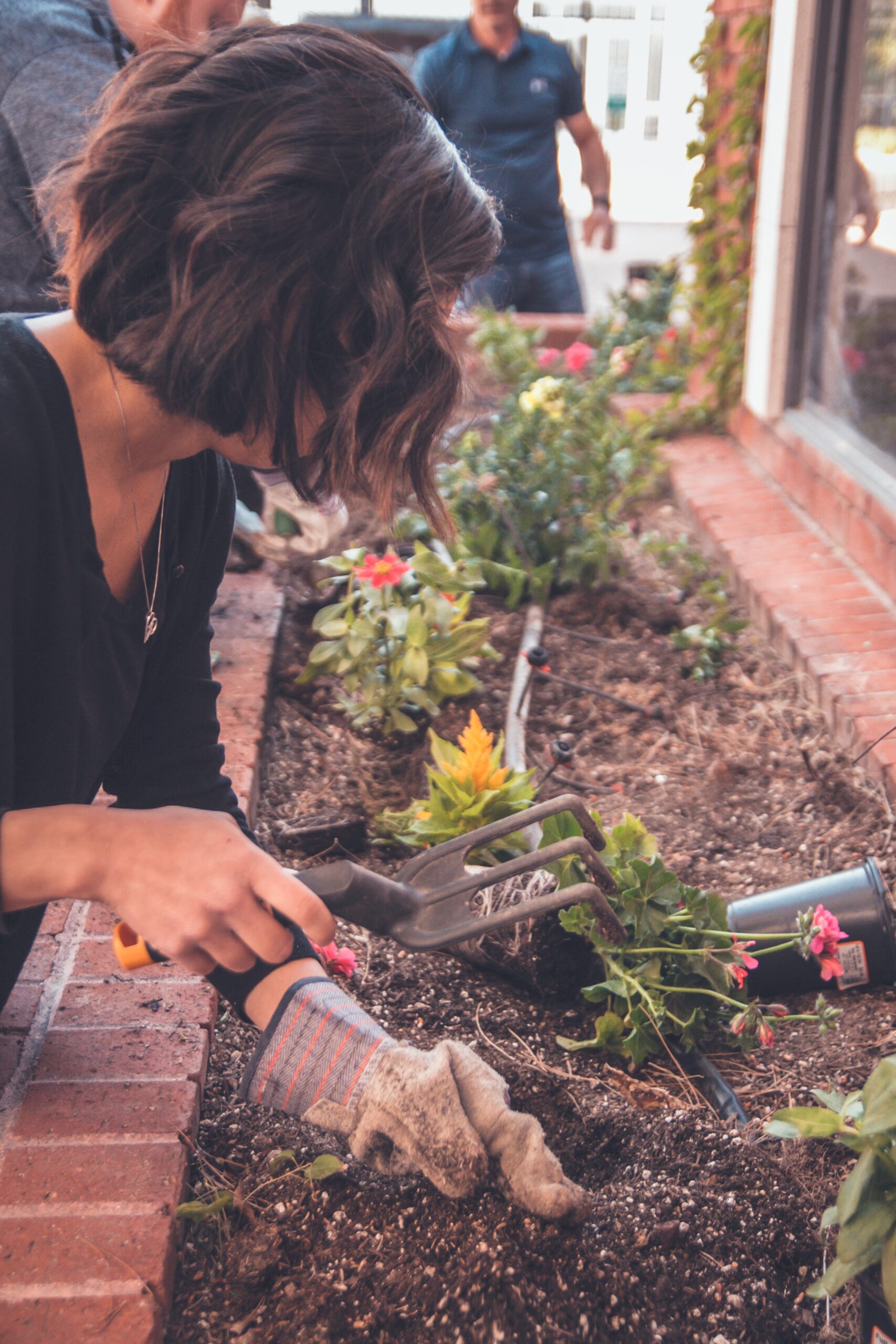The suitability of planting strawberries in the ground is a question that has piqued the curiosity of many avid gardeners and horticultural enthusiasts. In this article, we aim to explore the feasibility and potential benefits of cultivating strawberries directly in the soil. By examining the specific requirements of these delectable berries and analyzing the various factors that contribute to successful growth, we will shed light on the possibilities of nurturing these fruits in the rich, fertile earth. Join us on this informative journey as we navigate the intricacies of cultivating strawberries in the ground and uncover the secrets to a bountiful harvest. Yes, planting strawberries in the ground is not only possible but also offers several benefits compared to other growing methods. This article will discuss the various advantages of planting strawberries in the ground, as well as the steps involved in preparing the soil, selecting the right varieties, planting the strawberries, and taking care of them. Additionally, common mistakes to avoid when planting strawberries in the ground will be highlighted, and alternative methods of growing strawberries will be explored.

Benefits of Planting Strawberries in the Ground
Higher Yields
Planting strawberries in the ground provides the opportunity for higher yields compared to alternative methods. When grown in their natural environment, strawberries have more space to spread their roots and obtain essential nutrients from the soil. This allows them to develop a stronger root system, resulting in healthier and more productive plants. Additionally, ground-planted strawberries have better access to water, as precipitation naturally seeps into the soil, reducing the risk of drought stress.
Permanent Planting
Ground-planted strawberries offer the benefit of permanent planting. Unlike container planting or vertical growing systems, which require frequent transplanting and maintenance, strawberries planted in the ground establish their roots firmly, providing a stable foundation for long-term growth. This permanence eliminates the need for periodic repotting and reduces the overall labor involved in maintaining the plants.
Natural Growing Environment
Another advantage of planting strawberries in the ground is that it allows them to grow in a natural environment, similar to their native habitat. The soil provides the necessary nutrients and microorganisms that contribute to the overall health of the plants. Moreover, the ground offers optimal conditions for root development, ensuring the plants receive the necessary support and stability. By replicating the natural growing environment, ground-planted strawberries are more likely to thrive and produce high-quality fruit.
Preparing the Ground for Planting Strawberries
Choosing the Right Location
Before planting strawberries in the ground, selecting the appropriate location is crucial. Strawberries require full sun, ideally receiving at least six to eight hours of direct sunlight each day. Additionally, the location should have well-drained soil to prevent waterlogging, which can harm the roots. It is recommended to avoid areas prone to frost, as strawberries are sensitive to extreme cold temperatures.
Soil Preparation
Proper soil preparation is fundamental for successful strawberry cultivation. Firstly, it is essential to remove any existing vegetation, such as weeds or grass, from the planting area. This eliminates competition for nutrients and minimizes the risk of pests and diseases. Secondly, the soil should be tilled to a depth of approximately 8-10 inches to improve its structure and loosen any compacted areas. This allows for better root penetration and enhances water drainage.
Removing Weeds and Grass
As mentioned earlier, removing weeds and grass is a vital step in soil preparation for ground-planted strawberries. Weeds compete with the strawberries for nutrients, sunlight, and water. To effectively eliminate weeds, you can hand-pull them or use techniques such as hoeing or tilling. It is essential to complete this task thoroughly before planting to minimize future weed growth and interference with the strawberry plants.
Adding Organic Matter
To enrich the soil and enhance its fertility, adding organic matter is recommended. This can be accomplished by incorporating well-rotted compost or aged manure into the soil during the preparation process. Organic matter improves the soil’s structure, increases its water-holding capacity, and provides essential nutrients for the growing strawberries. Furthermore, it encourages beneficial soil microorganisms, which contribute to overall plant health.
Testing Soil pH
Before planting strawberries in the ground, it is advisable to test the soil pH. Strawberries prefer slightly acidic soil, with a pH range of 5.5 to 6.5. Conducting a soil test helps determine the current pH level and allows for necessary adjustments if needed. Lime can be added to raise the pH if it is too low, or sulfur can be added to lower the pH if it is too high. Achieving the appropriate soil pH ensures optimal nutrient uptake by the strawberry plants.

Selecting Strawberry Varieties for Ground Planting
Types of Ground-Planted Strawberries
There are three main types of ground-planted strawberries: June-bearing, everbearing, and day-neutral. June-bearing varieties produce a single large yield in late spring or early summer. Everbearing varieties produce two to three smaller harvests throughout the growing season. Day-neutral varieties have a continuous fruiting period, producing berries from late spring until the first frost.
Considerations for Variety Selection
When selecting strawberry varieties for ground planting, several factors should be considered. These include climate suitability, disease resistance, flavor preferences, and intended harvest times. It is essential to choose varieties that are well-adapted to the local climate to ensure optimal growth and fruit production. Disease resistance is also critical, as it reduces the risk of crop losses and minimizes the need for chemical interventions. Lastly, considering personal preferences in terms of flavor and intended harvest times ensures a satisfactory experience for the grower.
Recommended Varieties
Some recommended strawberry varieties for ground planting include ‘Earliglow,’ ‘Allstar,’ ‘Jewel,’ and ‘Seascape.’ ‘Earliglow’ is a popular June-bearing variety known for its exceptional flavor and early harvest. ‘Allstar’ is another June-bearing variety that offers high yields, disease resistance, and excellent flavor. ‘Jewel’ is a late-maturing June-bearing variety that produces large berries with a sweet taste. ‘Seascape’ is a day-neutral variety that is disease resistant and bears fruit throughout the growing season.
Planting Process for Ground-Planted Strawberries
Best Time to Plant
The best time to plant ground-planted strawberries varies depending on the local climate and the chosen strawberry variety. In general, it is recommended to plant strawberries in the early spring, as soon as the soil is workable and the threat of frost has passed. This allows the plants to establish their roots before the hot summer months. However, some gardeners may opt to plant in the fall, especially in regions with mild winters, to ensure earlier fruiting the following year.
Planting Techniques
When planting strawberries in the ground, there are two main techniques to consider: bare-root planting and container-grown planting. Bare-root planting involves removing the soil from the roots of the strawberry plant before placing it in the ground. Container-grown planting, on the other hand, involves transplanting strawberries that have been grown in containers directly into the ground. Both methods can be successful, but the specific technique chosen may depend on personal preference and availability of plant materials.
Plant Spacing
Proper plant spacing is crucial for ground-planted strawberries to facilitate healthy growth and optimal fruit production. It is recommended to space June-bearing varieties 12-18 inches apart, with rows spaced approximately 3 feet apart. For everbearing and day-neutral varieties, a spacing of 8-12 inches between plants and 2-3 feet between rows is typically sufficient. Adequate spacing allows air circulation, reduces the risk of diseases, and provides ample room for the plants to spread and produce runners.
Mulching
Applying a layer of mulch around the strawberry plants is highly beneficial for ground-planted strawberries. Mulch helps suppress weed growth, retain soil moisture, regulate soil temperature, and prevent direct contact between the fruit and the soil, reducing the risk of rot. Organic materials such as straw or wood chips are commonly used as mulch for strawberries. It is recommended to apply a layer of mulch approximately 2-4 inches thick, making sure to keep it away from direct contact with the stems to prevent potential damage.
Watering Requirements
Proper watering is essential to ensure the health and productivity of ground-planted strawberries. It is crucial to provide consistent moisture to the plants, especially during dry periods or when the fruit is developing. Deep watering is recommended, ensuring that the water reaches the root zone. It is ideal to irrigate strawberries in the morning to allow the foliage to dry before evening, reducing the risk of disease development. The frequency of watering will depend on factors such as local climate, rainfall, and soil type.

Taking Care of Ground-Planted Strawberries
Weed Control
Weed control is an ongoing task when caring for ground-planted strawberries. Weeds compete for nutrients, water, and sunlight, and can reduce the overall productivity of the plants. Regular weeding is necessary to prevent weed growth from overtaking the strawberry plants. Hand-pulling or hoeing can be effective methods for weed control. Applying a layer of mulch, as mentioned earlier, can also help suppress weed growth. Additionally, using pre-emergent herbicides or employing organic weed control methods can be considered.
Fertilizing Techniques
Proper fertilization is crucial for the growth and development of ground-planted strawberries. Before planting, incorporating organic matter into the soil helps provide initial nutrients. Afterward, regular fertilization should be carried out. It is recommended to use a balanced fertilizer with equal proportions of nitrogen, phosphorus, and potassium. Applying fertilizer in small doses throughout the growing season, rather than in a single application, allows for better nutrient uptake and minimizes the risk of over-fertilization.
Pest and Disease Management
Ground-planted strawberries are susceptible to various pests and diseases that can affect their health and fruit production. Common pests include aphids, slugs, snails, and spider mites. It is important to monitor the plants regularly and take appropriate measures, such as introducing beneficial insects or using organic pest control methods, to manage pest populations. Diseases that commonly affect strawberries include gray mold, powdery mildew, and root rot. Employing proper sanitation practices, practicing crop rotation, and using disease-resistant varieties can help mitigate these issues.
Protection from Birds
Birds can pose a significant threat to ground-planted strawberries, as they are attracted to the ripening fruit. To protect the berries from bird damage, various methods can be employed. Installing bird netting over the plants or using scare tactics like visual deterrents or noise devices can be effective in keeping birds away. It is important to ensure the netting is properly secured to prevent birds from becoming entangled.
Monitoring Plant Health
Regular monitoring of the overall health of ground-planted strawberries is essential to identify and address any issues promptly. Observing the plants for signs of nutrient deficiencies, pests, diseases, or other stressors allows for timely intervention. Prompt action can prevent the spread of diseases, minimize pest damage, and maintain the overall vigor of the plants. Monitoring should include checking for wilting, yellowing leaves, abnormal growth patterns, and the presence of pests or signs of damage.
Harvesting and Storing Ground-Planted Strawberries
Determining Ripeness
Knowing when strawberries are ripe for harvest is crucial to ensure optimal flavor and quality. Strawberries should be fully colored, with a glossy appearance. The berry should be firm, yet yielding to gentle pressure. Ripe strawberries also tend to have a strong aroma. Taste testing is the best way to determine ripeness, as ripe strawberries are sweet and flavorful.
Harvesting Techniques
To harvest ground-planted strawberries, it is best to use scissors or pruning shears to cut the stem directly above the fruit. This prevents damage to the plant and ensures the berries remain intact. Care should be taken not to pull or twist the berries, as this can lead to bruising or detachment from the stem. Harvesting should be done in the morning when the temperatures are cooler, as the fruit is firmer at this time.
Post-Harvest Handling
Post-harvest handling of ground-planted strawberries is critical to maintaining their freshness and quality. It is advisable to handle the berries gently to prevent bruising, as strawberries are delicate fruits. Removing any damaged or overripe berries before storage helps prevent the spread of rot. Strawberries should be kept cool and refrigerated as soon as possible after harvest to prolong their shelf life.
Storing Fresh Strawberries
Fresh strawberries should be stored in the refrigerator at a temperature of around 32-36°F (0-2°C). It is best to store them in a single layer in a container lined with paper towels to absorb excess moisture and prevent mold growth. Fresh strawberries are best consumed within a few days of harvest for optimal flavor and quality.
Common Mistakes to Avoid When Planting Strawberries in the Ground
Improper Site Selection
One common mistake when planting strawberries in the ground is choosing an unsuitable location. Failure to select a spot with sufficient sunlight, well-drained soil, and proper climate conditions can lead to poor plant growth, reduced yields, and increased susceptibility to diseases and pests. Careful site selection is crucial for the success of ground-planted strawberries.
Neglecting Soil Preparation
Neglecting proper soil preparation is another mistake to avoid. Inadequate removal of weeds and grass, failure to incorporate organic matter, and neglecting to test and adjust soil pH can hinder the growth and productivity of the strawberries. Taking the time to thoroughly prepare the soil before planting ensures that the strawberries have the best possible start.
Overcrowding Plants
Planting strawberries too closely together is a common mistake that can impede proper growth and reduce yields. Overcrowding prevents adequate airflow between the plants, which can lead to increased moisture retention and the development of diseases. Proper plant spacing, as previously explained, is crucial to allow for optimal growth and fruit production.
Inadequate Watering
Inadequate watering can have detrimental effects on the health and productivity of ground-planted strawberries. Failing to provide consistent moisture during periods of dry weather or when the fruit is developing can result in poor fruit quality, smaller yields, and an increased risk of plant stress and disease. Regular and deep watering is essential to support the growth and fruiting of strawberries.
Skipping Mulching
Mulching is a critical step in strawberry cultivation that is sometimes overlooked. Skipping mulching can lead to increased weed growth, water evaporation, and direct contact between the fruit and the soil, increasing the risk of rot and disease. Applying a layer of mulch around the strawberry plants helps optimize growing conditions and reduces maintenance requirements.
Alternative Methods of Growing Strawberries
Container Planting
Container planting is a popular alternative to ground planting for growing strawberries, especially in limited space or urban environments. Growing strawberries in containers allows for greater flexibility in terms of location and mobility. Additionally, containers provide better control over soil conditions and allow for easier monitoring and maintenance of the plants. The same principles of soil preparation, variety selection, and care apply to container planting.
Vertical Growing Systems
Vertical growing systems offer another alternative method for growing strawberries, particularly when space is limited. These systems involve growing strawberries in a vertical arrangement, such as on a trellis, wall, or specialized vertical planter. Vertical growing systems maximize the use of vertical space and can increase the overall yield per square foot. Careful attention to proper support, irrigation, and care practices is necessary in vertical growing systems.
Hydroponics
Hydroponics is a soil-less method of growing strawberries that involves providing essential nutrients to the plants through a water-based solution. This method allows for precise control over nutrient delivery and eliminates the need for traditional soil preparation. Hydroponics maximizes water efficiency and nutrient uptake by the plants, resulting in potentially higher yields and faster growth compared to traditional methods. However, hydroponic systems require specialized equipment and knowledge, making them more suitable for experienced growers.
Aquaponics
Aquaponics combines hydroponics with aquaculture, utilizing fish waste as a nutrient source for the plants. In an aquaponic system, strawberries can be grown in containers or vertical towers, with the nutrient-rich water circulating from the fish tank to the plants. This symbiotic relationship between the fish and the plants creates a sustainable and self-regulating growing system. Aquaponics offers the advantage of reduced water usage and nutrient recycling, but it also requires careful management of the fish and plant components.
Strawberry Towers
Strawberry towers are vertical structures specifically designed for growing strawberries in containers or bags arranged in a stacked configuration. These towers maximize vertical space utilization and provide an aesthetically pleasing way to grow strawberries in smaller areas. Strawberry towers require proper irrigation and nutrient delivery systems to ensure even watering and feeding throughout the tower. While visually appealing, strawberry towers may have more limited growing space compared to some other alternative methods.
Conclusion
Planting strawberries in the ground offers several benefits, including higher yields, permanent planting, and a natural growing environment. Proper preparation of the ground, careful selection of strawberry varieties, and adherence to planting and care techniques are essential for successful ground planting. Additionally, avoiding common mistakes, such as improper site selection and neglecting soil preparation and care, can help ensure optimal growth and fruit production. While ground planting is the most traditional method, alternative methods, such as container planting, vertical growing systems, hydroponics, aquaponics, and strawberry towers, offer creative solutions for different growing environments and individual preferences. With the appropriate knowledge and attention to detail, anyone can enjoy the sweet rewards of growing and harvesting their own strawberries in the ground.



